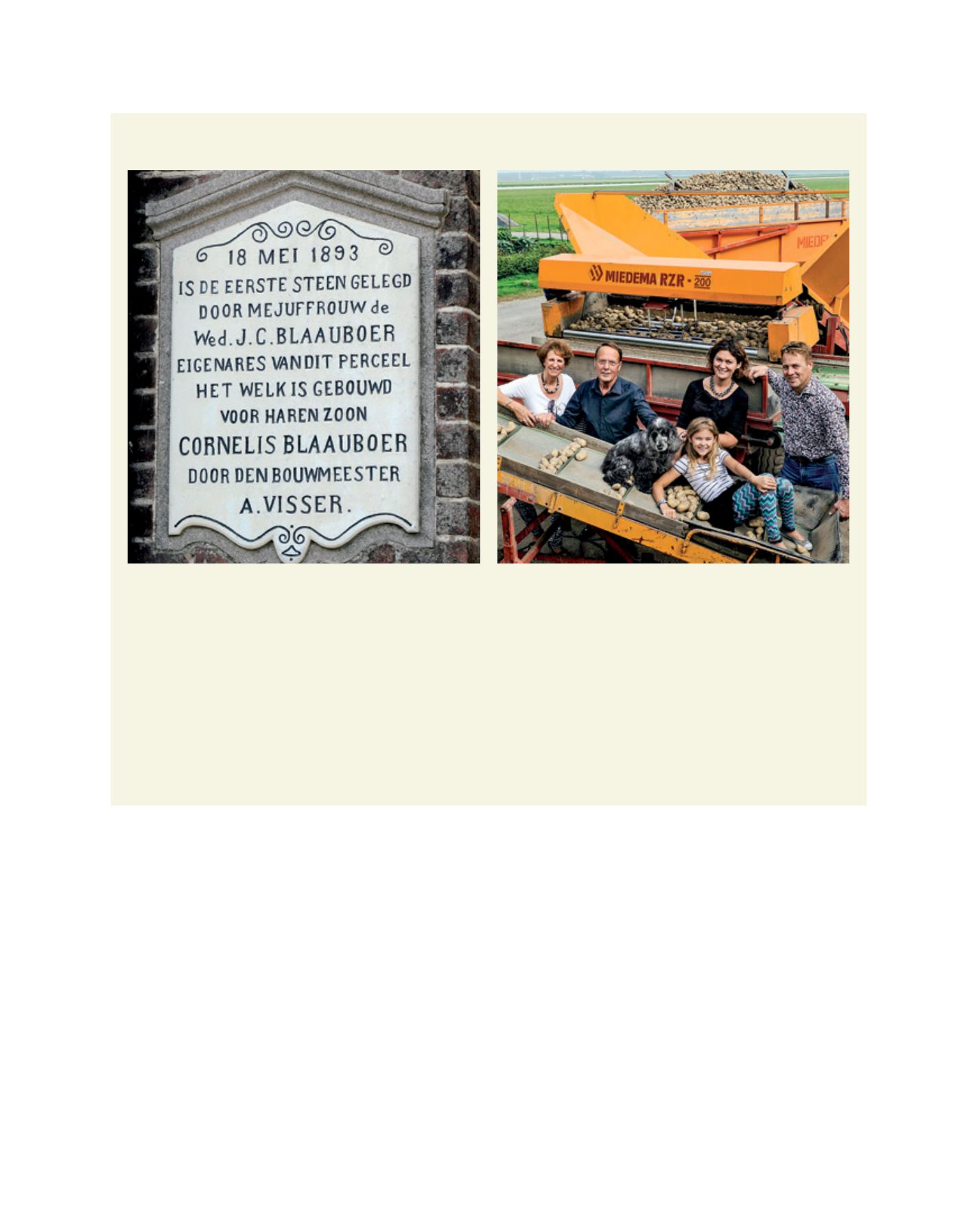

[
] 173
D
eep
R
oots
exploitation of existing products. In this respect, analysing
old farms that have been successful for ages may be helpful.
How have these sustainable farms balanced family and busi-
ness interests while at the same time being innovative and
creative through 200, 300 or maybe even 400 years? The
search for the oldest family farm in the Netherlands is one
of the projects that has been initiated in the context of the
International Year of Family Farming. The search process is
led by the Family Business Research Centre of Windesheim
University of Applied Sciences and the Dutch Federation of
Agriculture and Horticulture. A public call has led to 135
submissions. In the summer, information was gathered from
the 50 oldest family businesses. The focus is on the oldest
family that still runs a farm, so the search is not for the oldest
business as such, but for the oldest entrepreneurial farming
family. We need to investigate the year the farm was estab-
lished and from that year to see a continuing link between
the family and the business. A jury of historians will check
the information sent in by families. With the help of these
historians, we will try to establish a list of old family farms
and will perhaps find the overall oldest family firm. For
now, this is Royal Tichelaar Makkum, a well-known ceramic
factory. This company has been a family firm since 1640,
and it is now in the twelfth generation under the success-
ful leadership of Jan Tichelaar. In November the list will be
made public.
The list of old farms will offer insights into best practices in
transgenerational entrepreneurship. Farmers can learn from
these best practices. The project draws attention to the major
achievement of the families behind these old farms. For the
sustainability of the agrifood sector in the Netherlands it is
important that society as a whole acknowledges the important
role family farmers have played in the past, in the present and
will play in the future.
Case study: from whaling to arable farming
For dozens of years the distant ancestors of Jaap Blaauboer were,
apart from being farmers, also engaged in whaling and fishery. The
family could not make both ends meet only by farming.
As far as they can verify, the family Blaauboer have been working
as farmers at their Barsingerweg farm in Wieringerwaard since 1710.
Many generations grew their crops, kept cattle and were also active in
fishery. “They even went whaling as far as Greenland,” 73-year-old Jaap
Blaauboer explained.
As well as the farm, Jaap’s grandfather, Cornelis Blaauboer (born
in 1870), had two ships, the Wieringerwaard I and II. His father Pieter
Blaauboer and his father’s brother had no interest in fishery, so at the
age of 78 grandfather Cornelis Blaauboer sold the ships. The farm, built
in 1893, had a gateway named ‘Agriculture and Sea fishing’, recalls
Blaauboer. “Rust ended its existence.”
Until 1960 the company was a mixed farm with dairy and arable
farming. Jaap Blaauboer chose to specialize in agriculture. He married
Marietje Jimmink (71). They had a son Pieter (47) and a daughter Simone
(43). Pieter, who lives at the farm, is married to the Polish Ursula Przybyta
(37), who is a teacher. Their daughter Charlotte is eight years old. Jaap
and Marietje Blauwboer live next to the farm.
Blaauboer senior is still very active on the farm. Jaap and Pieter
Blaauboer grow seed potatoes, sugar beets, wheat, barley and grass
seed. The company owns 27 acres of land and the other plots of land are
further afield in the polder. “It’s toilsome farmwork,” said Blaauboer.
Asked about his choice to be a farmer, Blaauboer said: “You used to
have no choice. My father said, ‘Don’t dream of becoming rich from this
work.’ But my choice of becoming a farmer was well considered. The work
is varied, from sowing to harvesting. No office work for me.”
Over the centuries, the Blaauboer family has moved from whaling to arable farming
Images: John Oud
















